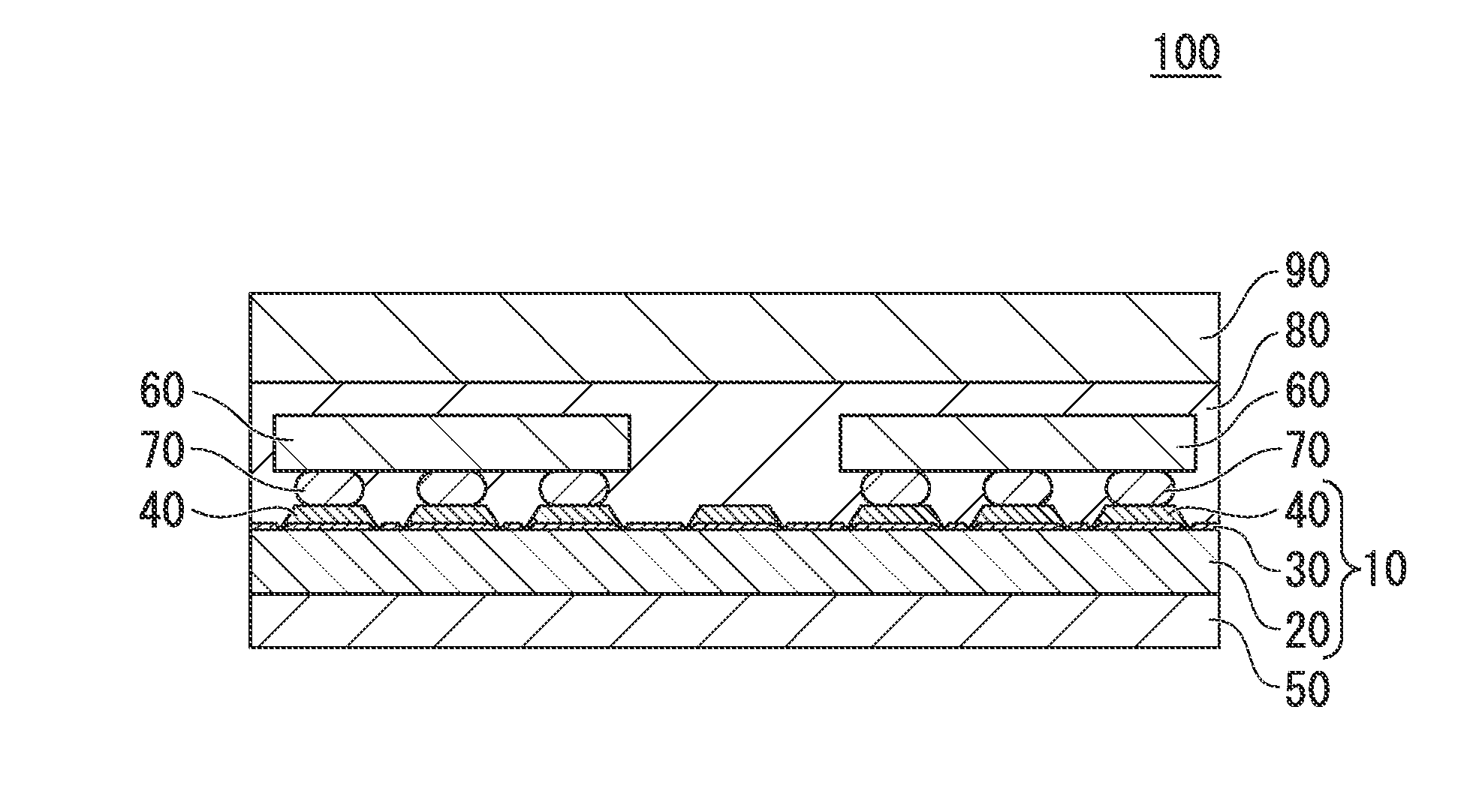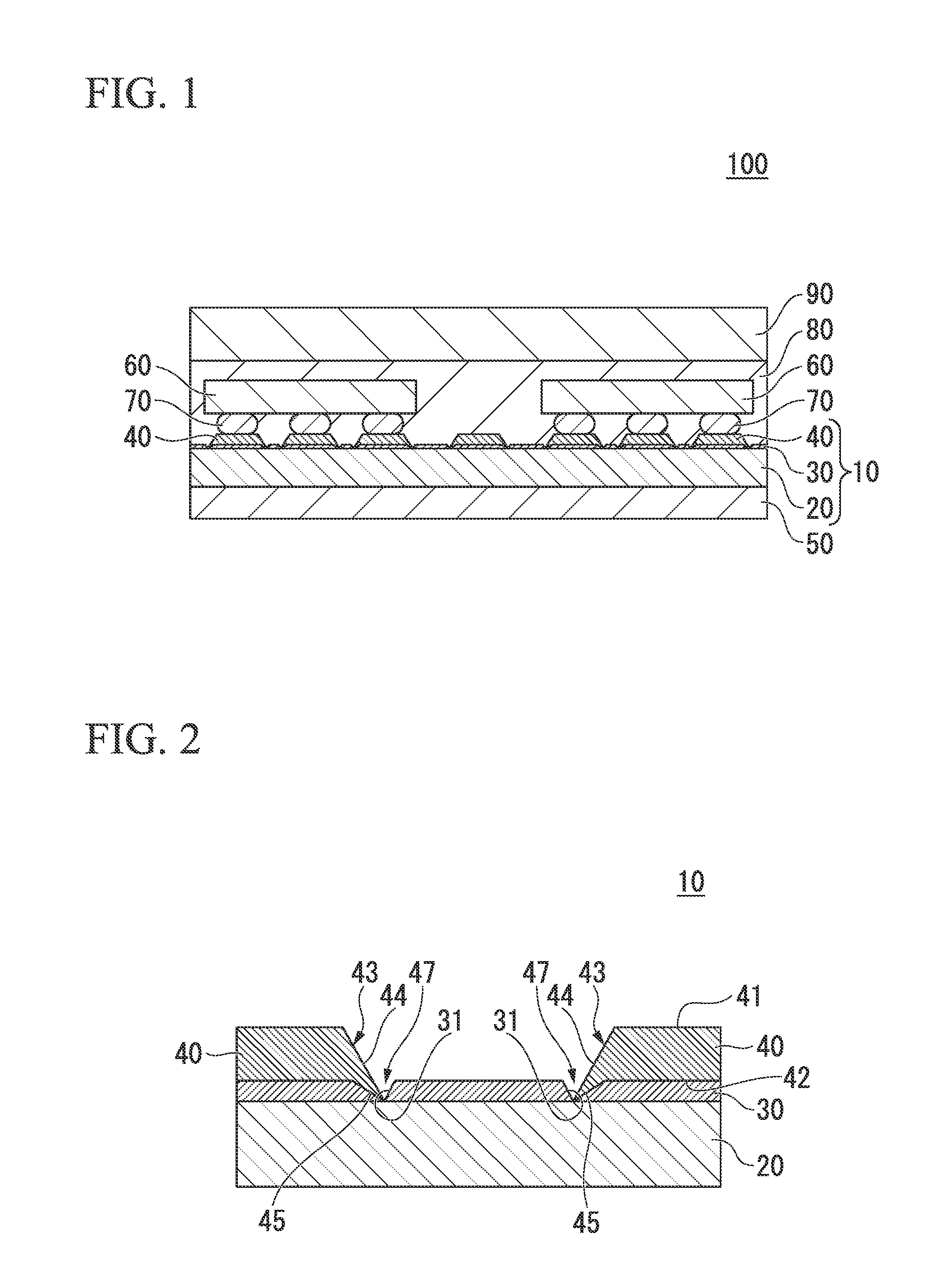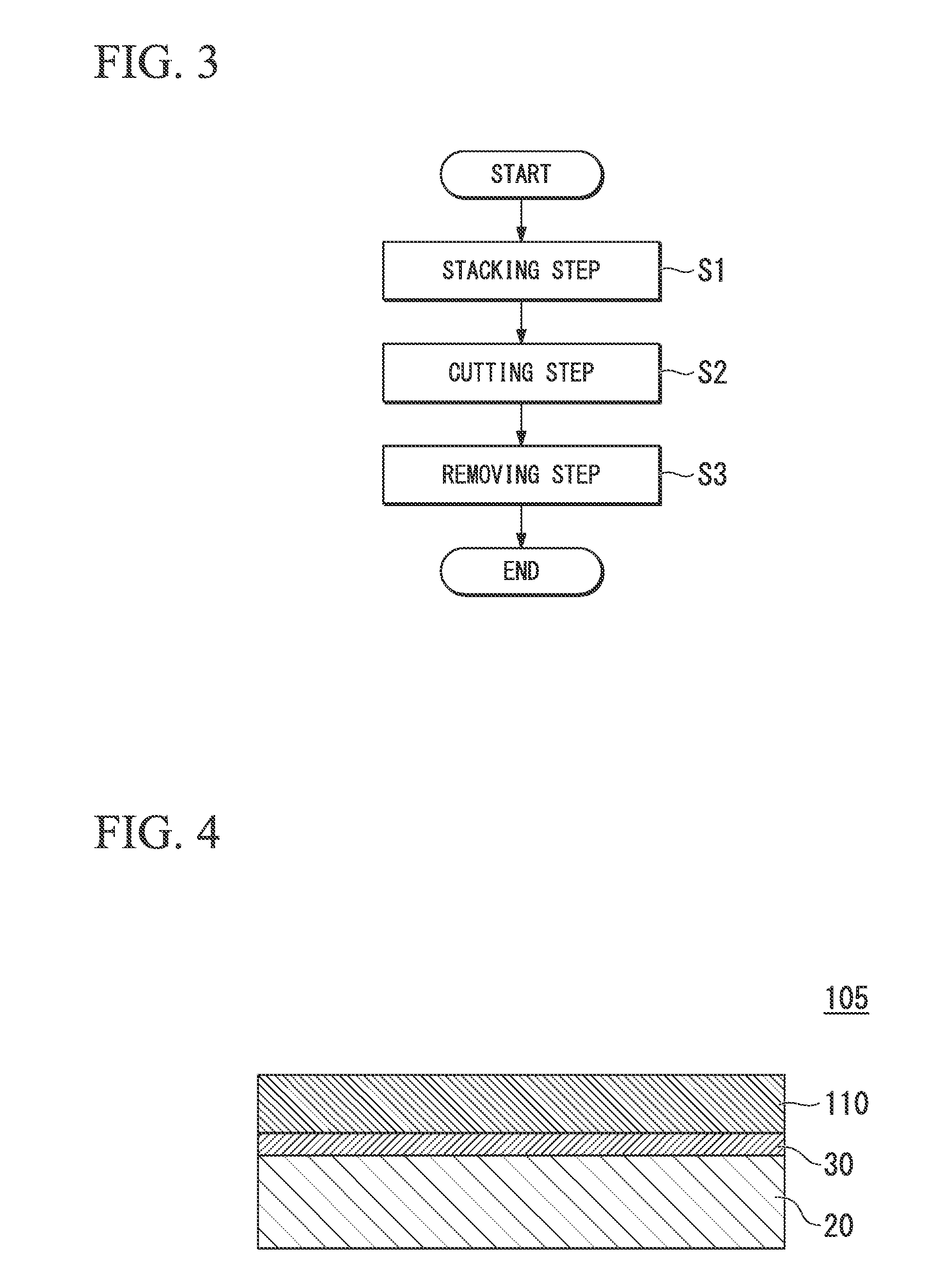Metal foil pattern layered body, metal foil layered body, metal foil multi-layer substrate, solar cell module, and method of manufacturing metal foil pattern layered body
- Summary
- Abstract
- Description
- Claims
- Application Information
AI Technical Summary
Benefits of technology
Problems solved by technology
Method used
Image
Examples
first embodiment
[0195]Firstly, a solar cell module 100 including a metal foil pattern layered body 10 of a first embodiment of the invention will be particularly described with reference to FIGS. 1 to 6.
[0196]FIG. 1 is a vertical cross-sectional view showing the solar cell module 100 of the first embodiment.
[0197]The solar cell module 100 is provided with: a metal foil pattern layered body 10; a back sheet 50 that is provided at the back face side of the metal foil pattern layered body 10 (lower side of the metal foil pattern layered body 10 in FIG. 1, and the position close to the back face of the metal foil pattern layered body 10); a plurality of solar cells 60 that are provided at the top face side of the metal foil pattern layered body 10 (upper side of the metal foil pattern layered body 10 in FIG. 1, and the position close to the top face of the metal foil pattern layered body 10); a seal member 80 that seals the solar cells 60 on the metal foil pattern layered body 10; and a light-transmiss...
second embodiment
[0295]Next, a metal foil pattern layered body 15 of a second embodiment of the invention will be explained with reference to FIG. 7.
[0296]In FIG. 7, identical symbols are used for the elements which are identical to those of FIG. 2, and detailed explanations thereof are omitted here.
[0297]The configuration of the cut portion 47 of the metal foil pattern layered body 15 of the second embodiment is different from that of the first embodiment.
[0298]The cut portion 47 of the second embodiment is continuously formed inside the adhesive layer 30 and inside the base member 20.
[0299]That is, the cut portion 47 is defined by a first base member inclined surface 21a, the adhesive-layer inclined surface 31, and a second base member inclined surface 21b.
[0300]Here, the first base member inclined surface 21a forms a continuous surface with the first inclined surface 44 and is formed inside the base member 20 so as to extend along the first inclined surface 44.
[0301]The second base member inclin...
third embodiment
[0310]Next, a solar cell module 100 provided with a metal foil pattern layered body 210 of a third embodiment of the invention will be particularly described with reference to FIGS. 8 to 12.
[0311]In the third embodiment, identical symbols are used for the elements which are identical to those of the first embodiment and the second embodiment, and the explanations thereof are omitted or simplified here.
[0312]FIG. 8 is a vertical cross-sectional view showing the solar cell module 200 of the third embodiment.
[0313]The solar cell module 200 is provided with: a metal foil pattern layered body 210; a back sheet 50 that is provided at the back face side of the metal foil pattern layered body 210 (lower side of the metal foil pattern layered body 210 in FIG. 8, and the position close to the back face of the metal foil pattern layered body 210); a plurality of solar cells 60 that are provided at the top face side of the metal foil pattern layered body 210 (upper side of the metal foil patter...
PUM
| Property | Measurement | Unit |
|---|---|---|
| Time | aaaaa | aaaaa |
| Angle | aaaaa | aaaaa |
| Angle | aaaaa | aaaaa |
Abstract
Description
Claims
Application Information
 Login to view more
Login to view more - R&D Engineer
- R&D Manager
- IP Professional
- Industry Leading Data Capabilities
- Powerful AI technology
- Patent DNA Extraction
Browse by: Latest US Patents, China's latest patents, Technical Efficacy Thesaurus, Application Domain, Technology Topic.
© 2024 PatSnap. All rights reserved.Legal|Privacy policy|Modern Slavery Act Transparency Statement|Sitemap



